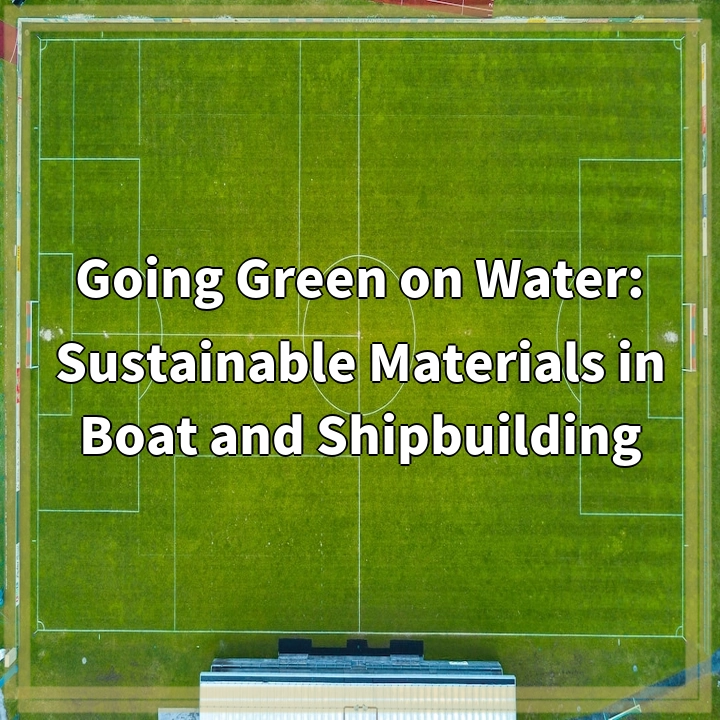
What it is:
In the marine industry, there is a growing movement towards sustainable practices, including the use of green materials in boat and shipbuilding. These materials are environmentally friendly alternatives to conventional materials, with a focus on reducing the industry’s ecological footprint and addressing environmental concerns.
Real-World Problems:
The conventional boat and shipbuilding industry heavily relies on materials that have significant environmental impacts. Some of the real-world problems associated with this include:
1. Environmental Pollution:
The extraction, manufacturing, and disposal processes associated with conventional materials used in boat and shipbuilding can lead to environmental pollution. For example, the use of fiberglass reinforced plastic (FRP) releases harmful chemicals into the environment during production and disposal.
2. Depletion of Natural Resources:
Conventional materials, such as hardwoods, often require the excessive harvesting of natural resources. This can result in deforestation, habitat destruction, and the depletion of valuable ecosystems.
3. Carbon Footprint:
The boat and shipbuilding industry contributes to greenhouse gas emissions through various processes, including manufacturing, transportation, and usage. Traditional materials, such as steel and aluminum, require significant energy input during production, contributing to the overall carbon footprint of the industry.
4. Waste Generation and Disposal:
Conventional materials used in boat and shipbuilding often generate a significant amount of waste during the manufacturing process. Additionally, when these vessels reach the end of their life, the disposal of bulky materials becomes a challenge. This leads to increased landfill waste or improper disposal practices that can harm the environment.
Adopting sustainable materials in boat and shipbuilding can help address these real-world problems by reducing pollution, conserving natural resources, mitigating carbon emissions, and promoting responsible waste management practices. In the subsequent sections of this blog, we will explore the various sustainable materials that are being used in the industry through case studies and examples.

Solutions:
To address the real-world problems associated with boat and shipbuilding, there are several solutions being implemented in the industry:
1. Sustainable Material Alternatives:
One of the key solutions is the adoption of sustainable materials that have a lower environmental impact. This includes the use of natural fibers, such as flax or hemp composites, which require less energy and fewer chemicals during production compared to traditional materials like fiberglass.
2. Lifecycle Analysis and Design:
Implementing lifecycle analysis techniques and design principles can help in creating eco-friendly vessels. Taking into account the entire lifecycle of a boat or ship, from manufacturing to disposal, allows for the identification of areas where environmental efficiencies can be improved.
3. Recycling and Repurposing:
Encouraging the recycling and repurposing of materials can reduce waste in the boat and shipbuilding industry. This means finding innovative ways to reuse components or reintroduce materials back into the production cycle, reducing the need for freshly extracted resources.
4. Improved Manufacturing Processes:
Developing and utilizing cleaner manufacturing processes can significantly reduce the environmental impact of boat and shipbuilding. This can include the use of renewable energy sources, more efficient production techniques, and the adoption of technologies that minimize waste and emissions.
By implementing these solutions, the boat and shipbuilding industry can make significant strides towards sustainability, reducing pollution, conserving resources, minimizing carbon emissions, and promoting responsible waste management. It is crucial for industry stakeholders to collaborate and prioritize the adoption of these practices to create a greener and more sustainable future for watercraft construction.















